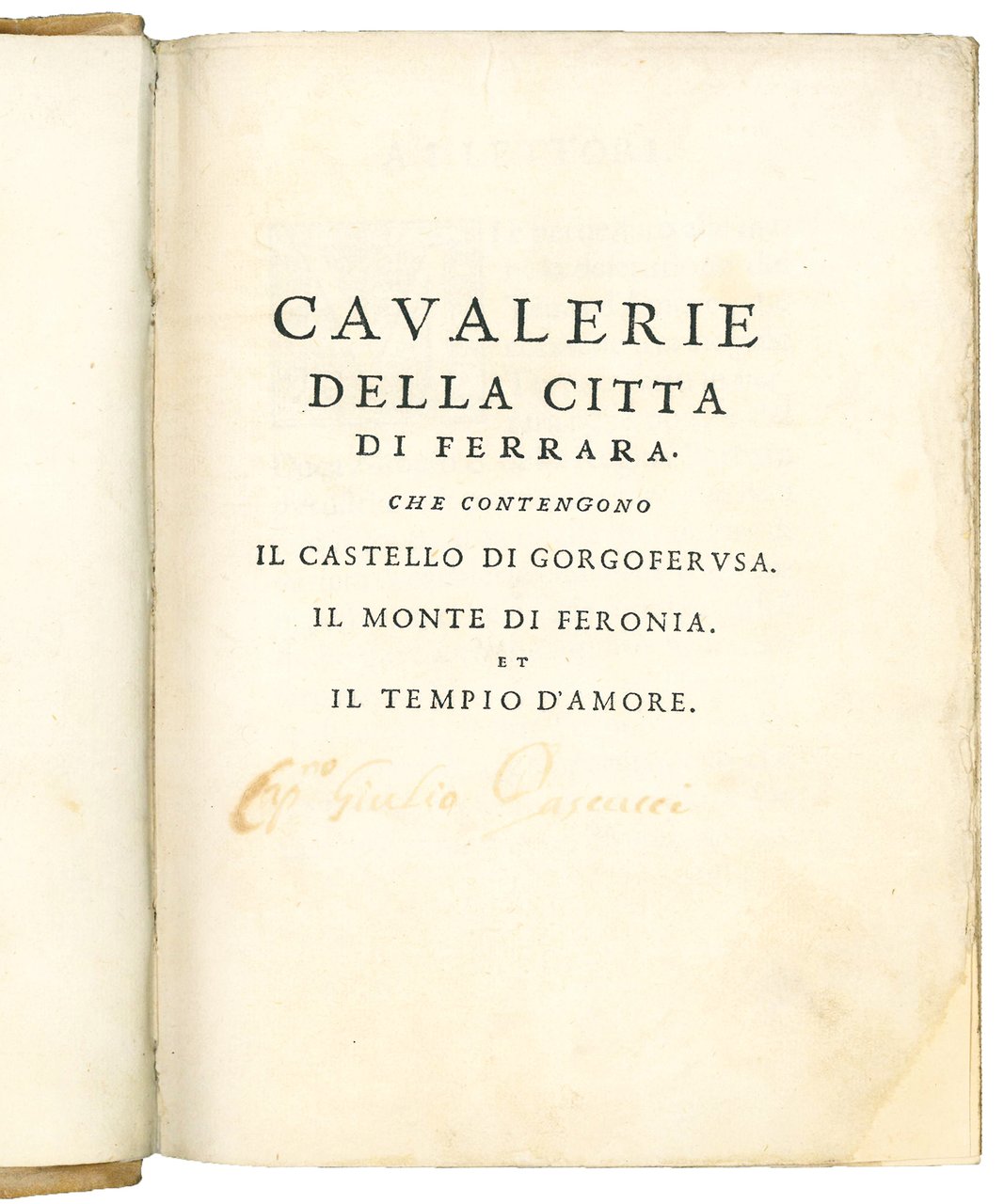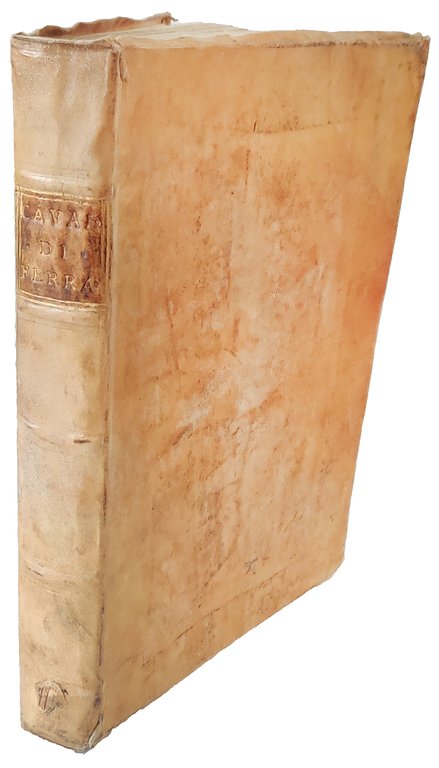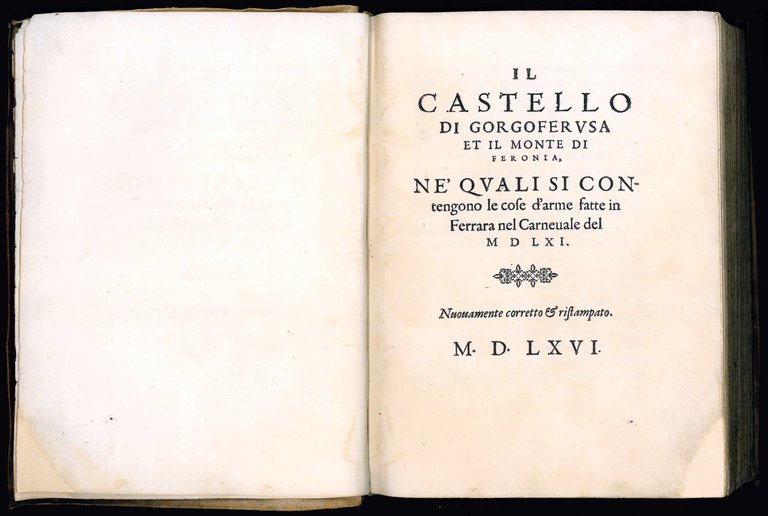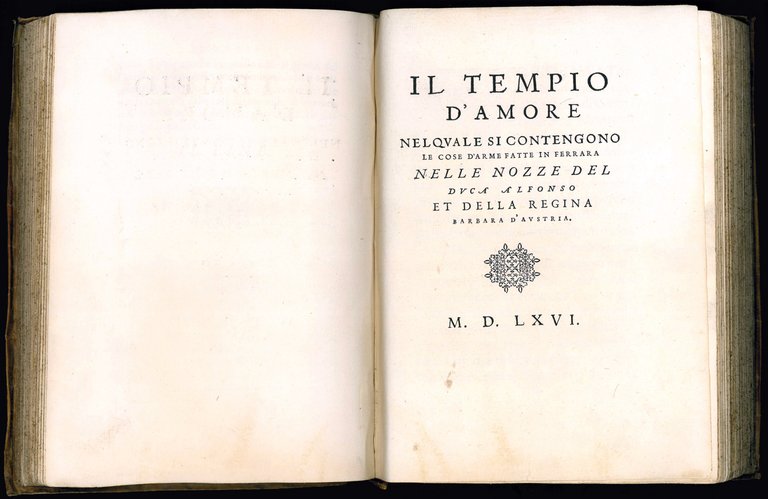



Libri antichi e moderni
ARGENTI, Agostino (d. 1576)-PIGNA, Giovanni Battista (1530-1575)
Cavalerie della città di Ferrara che contengono il Castello di Gorgoferusa, Il Monte di Feronia, et il Tempio d'amore
[Francesco Rossi il Giovane], [1566]
1800,00 €
Govi Libreria Antiquaria
(Modena, Italia)
Le corrette spese di spedizione vengono calcolate una volta inserito l’indirizzo di spedizione durante la creazione dell’ordine. A discrezione del Venditore sono disponibili una o più modalità di consegna: Standard, Express, Economy, Ritiro in negozio.
Condizioni di spedizione della Libreria:
Per prodotti con prezzo superiore a 300€ è possibile richiedere un piano rateale a Maremagnum. È possibile effettuare il pagamento con Carta del Docente, 18App, Pubblica Amministrazione.
I tempi di evasione sono stimati in base ai tempi di spedizione della libreria e di consegna da parte del vettore. In caso di fermo doganale, si potrebbero verificare dei ritardi nella consegna. Gli eventuali oneri doganali sono a carico del destinatario.
Clicca per maggiori informazioniMetodi di Pagamento
- PayPal
- Carta di Credito
- Bonifico Bancario
-
-
Scopri come utilizzare
il tuo bonus Carta del Docente -
Scopri come utilizzare
il tuo bonus 18App
Dettagli
Descrizione
First collective edition (Il Monte di Feronia and Il Castello di Gorgoferusa had already been printed at Venice in 1561). The first two pieces are attributed to Agostino Argenti (cf. A. Solerti, Ferrara e la corte estense nella seconda metà del secolo decimosesto, Città di Castello, 1900, pp. XXVIII-XXXIX), whereas the newly added Tempio d'Amore to Giovanni Battista Pigna (cf. R. Baldi, Giovanni Battista Pigna, uno scrittore politico nella Ferrara del Cinquecento, Genoa, 1983, p. 35).
In Ferrara under the late Este dukes the tournament was developed to its highest form of elaboration as the old format of ‘defi par cartel' gradually gave way to the ‘tournoi à theme'. The Este court had always been open to northern influences, and was fountainhead from whence flowed chivalric practice in its new renaissance guise. Ferrara, too, was seminal for the marriage of the ingredients of a Greco-Latin humanist culture to the mythology of romance civilization from north of the Alps. In the 1560s under Duke Alfonso II, a series of ‘tournois à the-me' were staged. In these, sustained plots, carefully conceived in philosophical and symbolic terms under the supervision of the leading poets of the day, were adorned with complex stage machinery, a range of literary forms embracing verse, dialogue and monologue besides sung and instrumental music, all on a scale which anticipates not only the equestrian set pieces of the baroque age, but also opera (cf. I. Mamczarz, Gli spattacoli cavallereschi a Ferrara del Cinquecento, in: “Il teatro italiano del Rinascimento”, Milan, 1980, pp. 425-458).
Il Monte di Feronia was staged on the occasion of a visit to the court by Francesco de' Medici. It was performed in the courtyard of the Palazzo Ducale on March 27, 1561, utilizing the same stage and scenery as Il Castello di Gorgoferusa just three weeks previously. It included all the ingredients of the normal Baroque tourney: an introduction set to music, a pre-arranged contest in an arena surrounded by spectators between a number of squadrons on horseback accompanied by many supernumeraries possibly in chariots or carriages, a raised stage with movable scenery, music and musicians, some in costume. “Il torneo regge sulla base di un'articolata finzione. La ‘regina di Alfarabia' si fa annunciare nella città di Ferrara per raccontare le sventure del suo consorte, Colocauro, re di Panticapea, dal nemico preso e fatto prigioniero. Vengono in seguito stabilite delle intricate regole di combattimento per effettuare la sua liberazione, con definizione dei premi, dei rischi e quant'altro. Così viene creato un fantasioso pretesto per l'esecuzione di tradizionali prassi cavalleresche, che qui diventano parte integrante di una non troppo concentrate azione drammatica. In tal modo gli attori, i musicisti, insomma gli artisti, finiscono per ‘collaborare' con più schiere di cavalieri ferraresi nel contesto di uno spettacolo straordinariamente eterogeneo. Il ruolo non trascurabile riservato alla musica emerge con chiarezza da un'attenta lettura della summenzionata descrizione. Abbondano i riferimenti al canto e al suono, anche se non spunta il nome di alcun musicista” (T. Walker, Echi estensi negli spettacoli musicali a Ferrara nel primo Seicento, in: “La Corte di Ferrara e il suo mecenatismo 1441-1598. The Court of Ferrara & its Patronage. Atti del convegno internaz

